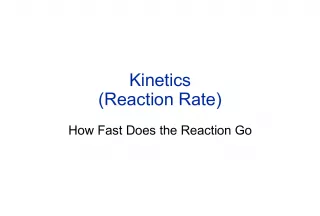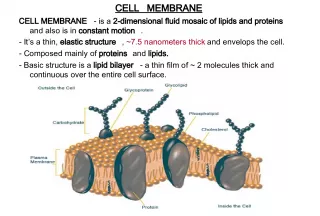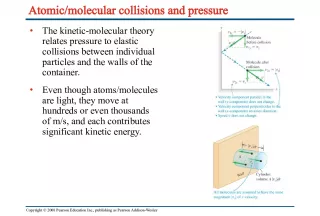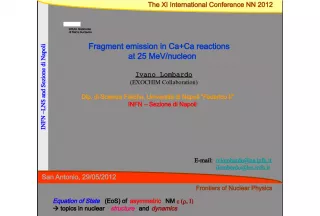Elastic and Inelastic Collisions
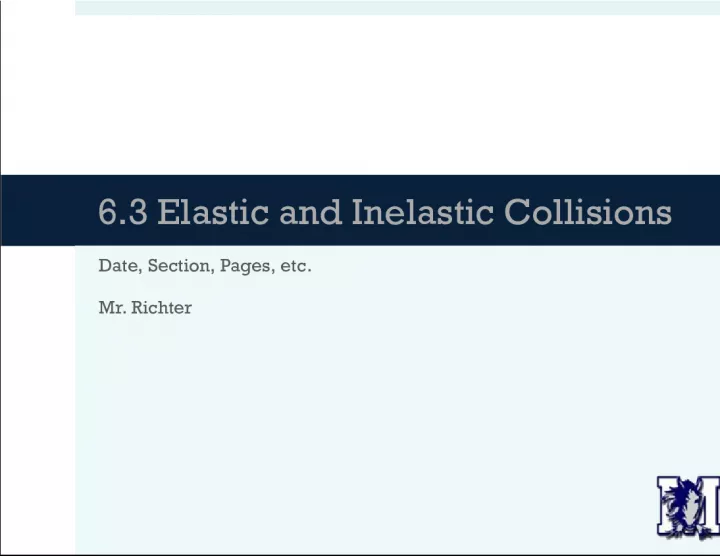

In this agenda, Mr. Richter's class will cover the topic of collisions in physics. They will start the lesson by reviewing the homework from section 7.1 and practicing problems for section
- Uploaded on | 2 Views
-
 georgiamedina
georgiamedina
About Elastic and Inelastic Collisions
PowerPoint presentation about 'Elastic and Inelastic Collisions'. This presentation describes the topic on In this agenda, Mr. Richter's class will cover the topic of collisions in physics. They will start the lesson by reviewing the homework from section 7.1 and practicing problems for section. The key topics included in this slideshow are . Download this presentation absolutely free.
Presentation Transcript
Slide16.3 Elastic and Inelastic CollisionsDate, Section, Pages, etc. Mr. Richter
Slide2Agenda Today: Warm Up Review HW from 7.1 Practice Problems for 7.2 Intro to Collisions (7.3) Tomorrow Conservation of Momentum Lab Thursday: Review HW from 7.2 Finish Collisions (7.3) Friday: Problem Solving Practice Monday: Concepts Review Tuesday Chapter 6 Test
Slide3Warm-Up: Assume two cars have the same mass and speed going into a collision. Scenario A: Two cars collide with each other but bounce off. Neither of them sustain noticeable damage. Scenario B: Two cars collide with each other and crumple, sticking together after the crash. 1. In which scenario do you think energy is conserved? 2. In which scenario do you think the driver feels more force?
Slide4Conservation of MomentumPractice Problems
Slide5Practice Problems1. Recoil: A boy on a skateboard initially at rest tosses an 8.0 kg jug of water in the forward direction at a speed of 3.0 m/s. If the boy and the skateboard move backward at 0.60 m/s, find the mass of the boy. 2. Collision: p. 234 #39 As long as everything is in grams (g) and centimeters per second (cm/s), THERE IS NO NEED TO CONVERT.
Slide6Agenda Review HW from 6.2 Recap Elastic and Inelastic Collisions Problem Solving with Elastic and Inelastic Collisions Forces in Elastic and Inelastic Collisions
Slide7Objectives Identify different types of collisions. Calculate change in kinetic energy (or lack thereof) in different types of collisions. Find the final velocity of objects in different types of collisions. Understand the relationship between the type of collision and the force experienced by the object.
Slide8Elastic Collisions
Slide9Collisions Collisions can be categorized into two types: elastic inelastic Elastic collisions are when objects bounce off of each other. (Elastics are like rubber bands, and rubber bounces) Scenario A. Inelastic collisions are when objects stick together after the crash. Scenario B.
Slide10Elastic Collisions In perfectly elastic collisions objects: Bounce off each other No loss of energy due to speed (kinetic energy) No change of shape. In real life, there are almost no perfectly elastic collisions. Almost always, some energy is lost to sound or heat in a collision.
Slide11Elastic Collisions: Awesome Examples
Slide12Elastic Collisions: Problem Solving Both momentum and kinetic energy are conserved in perfectly elastic collisions. Masses separate afterward.
Slide13Practice Problem
Slide14Inelastic Collisions
Slide15Inelastic Collisions In inelastic collisions objects: Stay stuck together Kinetic energy is lost to: Primarily internal energy Heat Sound Objects are deformed (shape is changed. In real life, most collisions are a combination of elastic and inelastic collisions. Objects will deform a little, and separate a little.
Slide16Inelastic Collisions: Awesome Example
Slide17Inelastic Collisions: Problem Solving Only momentum is conserved in inelastic collisions. Kinetic energy is lost. Masses stick together afterward.
Slide18Practice Problem
Slide19Forces in Collisions
Slide20Forces in Collisions Assume two objects that have the same mass and the same speed collide with each other. In which type of collision do they experience a greater change in momentum? inelastic (both vehicles stop) elastic (both vehicles stop and reverse direction) Elastic collisions have greater changes in speed, thus the objects experience more force!
Slide21Forces in Collisions: Examples Think of a batter in baseball. Does the baseball experience more force when the batter: bunts (inelastic) hits a home run (elastic) Your car is designed to crumple (inelastic), so that you experience less force. Greater changes in momentum mean more force. Elastic collisions are more forceful!
Slide22Wrap-Up: Did we meet our objectives? Identify different types of collisions. Calculate change in kinetic energy (or lack thereof) in different types of collisions. Find the final velocity of objects in different types of collisions. Understand the relationship between the type of collision and the force experienced by the object.
Slide23Homework p. 230 #1-5
